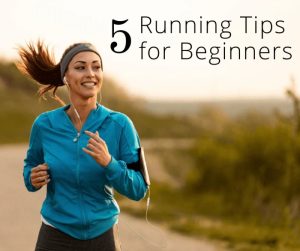
Ever feel like your mind and body are locked in a perpetual tug-of-war? One’s screaming for a donut, the other’s demanding a marathon? Welcome to the fascinating world of mind-body fitness, where we ditch the internal wrestling match and embrace a harmonious blend of physical and mental well-being. Forget the rigid, “no pain, no gain” mentality; this is about cultivating a relationship with your body that’s as joyful as it is effective.
Think of it as a high-five between your brain and your biceps, a love song sung by your lungs and your libido. Prepare for a journey of self-discovery, where strength training meets mindful meditation and kale smoothies become your new best friend.
This exploration dives deep into the interconnectedness of physical activity, nutrition, stress management, and mental clarity. We’ll unravel the secrets to unlocking your inner superhero – the one who conquers stress with a mindful breath, fuels their body with vibrant foods, and tackles challenges with both mental fortitude and physical prowess. Get ready to ditch the diet-and-exercise dichotomy and embrace a holistic approach that nurtures your entire being.
Defining Mind-Body Fitness
Forget the image of a sweaty gym-goer grunting through bicep curls. Mind-body fitness is a whole different kettle of fish – or perhaps, a more holistic bowl of quinoa. It’s about recognizing the deep, inextricable link between your physical and mental well-being, and nurturing both with equal enthusiasm. Think of it as a harmonious duet between your body and mind, rather than a solo performance by one or the other.Mind-body fitness acknowledges that your physical health significantly impacts your mental state, and vice-versa.
A stressed mind can lead to physical tension, poor sleep, and weakened immunity, while a sedentary lifestyle can contribute to anxiety and depression. It’s a beautiful, albeit sometimes messy, feedback loop. The goal is to create a positive cycle where physical activity boosts mental clarity, and mental calmness enhances physical performance.
The Interconnectedness of Physical and Mental Well-being
The mind-body connection isn’t just a trendy wellness buzzword; it’s a fundamental truth about human existence. Your thoughts, emotions, and beliefs directly influence your physiological responses – your heart rate, blood pressure, muscle tension, and even your immune system. Chronic stress, for example, can lead to a cascade of physical problems, while regular exercise has been shown to alleviate symptoms of anxiety and depression.
This isn’t to say that a daily yoga session will magically cure all ills, but it highlights the profound impact of mind-body practices on overall health.
Examples of Mind-Body Fitness Activities
Many activities foster this crucial mind-body connection. Think beyond the typical gym workout. Consider these examples:
| Activity | Physical Benefits | Mental Benefits | Example |
|---|---|---|---|
| Yoga | Increased flexibility, strength, balance | Reduced stress, improved focus, enhanced self-awareness | Holding a Warrior II pose, feeling the stretch in your legs while focusing on your breath. |
| Tai Chi | Improved balance, coordination, cardiovascular health | Reduced anxiety, improved mood, increased calmness | Performing slow, flowing movements, paying attention to the subtle shifts in your body’s weight. |
| Pilates | Core strength, improved posture, increased flexibility | Increased body awareness, reduced stress, improved focus | Concentrating on proper form during a hundred exercise, feeling the engagement of your core muscles. |
| Mindfulness Meditation | Reduced muscle tension, improved sleep | Increased self-awareness, reduced stress and anxiety, improved emotional regulation | Focusing on your breath, noticing your thoughts and feelings without judgment. |
Traditional Fitness vs. Mind-Body Fitness
Let’s compare the approaches:
| Feature | Traditional Fitness | Mind-Body Fitness |
|---|---|---|
| Focus | Primarily physical strength, endurance, and weight loss | Holistic well-being, encompassing physical and mental health |
| Approach | Often intense, high-impact exercises | Gentle, mindful movements; emphasis on breath and awareness |
| Goal | Achieving specific physical goals (e.g., weight loss, muscle gain) | Improving overall well-being, reducing stress, enhancing self-awareness |
| Examples | Weightlifting, running, HIIT | Yoga, Tai Chi, Pilates, meditation |
The Role of Stress Management
Stress: the uninvited guest at the party of life. It crashes in, uninvited, munching on chips and leaving a trail of cortisol and tension in its wake. While a little stress can be a motivator (think deadline-fueled productivity!), chronic stress is a party pooper of epic proportions, wreaking havoc on both your mind and body.Stress impacts physical health in myriad ways.
It’s like a tiny gremlin constantly poking holes in your physical resilience. Think weakened immunity, leading to more frequent colds; digestive issues ranging from heartburn to IBS; sleep disturbances that leave you feeling perpetually foggy; and even increased risk of serious conditions like heart disease. Essentially, chronic stress accelerates aging and makes you a less resilient version of your awesome self.
Stress Management Techniques
Effective stress management isn’t about eliminating stress entirely—that’s unrealistic. It’s about developing coping mechanisms to navigate stressful situations and minimize their negative impact. This involves a multifaceted approach, incorporating various techniques tailored to individual needs and preferences.
Mindfulness Practices for Stress Reduction
Mindfulness, in its simplest form, is paying attention to the present moment without judgment. It’s like hitting the pause button on the mental chatter and tuning into your body and senses. This simple act can have profound effects on stress levels. Examples include mindful breathing exercises (focusing on the sensation of breath entering and leaving your body), body scans (paying attention to sensations throughout your body), and mindful walking (observing the feeling of your feet on the ground and the movement of your body).
These practices help to calm the nervous system and reduce the physiological effects of stress. Imagine it as a mental spa day for your brain.
Incorporating Stress Management into a Daily Routine
A step-by-step guide to weaving stress management into your daily life might look something like this:
- Identify your stressors: Keep a journal for a week, noting situations or thoughts that trigger stress. This self-awareness is crucial for targeted intervention.
- Schedule in “me time”: Just like you schedule meetings, schedule time for relaxation. This could be 15 minutes of meditation, a walk in nature, or a relaxing bath. Treat it as a non-negotiable appointment.
- Practice mindful breathing: Start with just five minutes a day. Find a quiet space, close your eyes, and focus on your breath. When your mind wanders (and it will!), gently redirect your attention back to your breath.
- Incorporate movement: Exercise releases endorphins, which have mood-boosting effects. Find an activity you enjoy, whether it’s yoga, dancing, or a brisk walk.
- Prioritize sleep: Aim for 7-9 hours of quality sleep each night. A well-rested body and mind are better equipped to handle stress.
- Learn to say no: Overcommitting is a surefire way to increase stress. Don’t be afraid to politely decline requests that will overwhelm you.
- Connect with others: Social support is a powerful buffer against stress. Spend time with loved ones, or reach out to a friend or family member when you’re feeling overwhelmed.
Nutrition and Mental Clarity

Your brain is a magnificent organ, a biological supercomputer running on approximately 20% of your daily energy intake. Fuel it with the wrong stuff, and you’re essentially running that supercomputer on low-grade gasoline – expect glitches, crashes, and a general feeling of sluggishness. Nourish it properly, however, and prepare for a mental upgrade, a cognitive boost that’ll leave you feeling sharp, focused, and ready to conquer the world (or at least, your to-do list).The relationship between diet and cognitive function is surprisingly straightforward: what you eat directly impacts your brain’s performance.
Think of it like this: your brain needs specific nutrients to function optimally, just like a car needs gasoline and oil. Deprive it of these essential components, and you’ll experience a noticeable decline in mental sharpness, memory, and overall cognitive function. It’s not rocket science, but it’s often overlooked in our fast-paced, processed-food-obsessed world.
Brain-Boosting Foods
A balanced diet rich in specific nutrients is key to supporting brain health and mental well-being. We’re not talking about magic pills or fad diets; we’re talking about incorporating delicious, wholesome foods into your daily routine.
- Fatty Fish (Salmon, Mackerel, Tuna): These are packed with omega-3 fatty acids, crucial for brain structure and function. Think of them as the high-octane fuel for your brain. A deficiency can lead to decreased cognitive function and even depression.
- Berries (Blueberries, Strawberries, Raspberries): These antioxidant powerhouses protect brain cells from damage, helping to improve memory and cognitive function. Imagine them as tiny, delicious superheroes fighting off brain-damaging free radicals.
- Dark Leafy Greens (Spinach, Kale, Collard Greens): These are brimming with vitamins K, C, and E, as well as folate and lutein – all essential for brain health. They’re like the multivitamin your brain secretly craves.
- Nuts and Seeds (Almonds, Walnuts, Chia Seeds): Excellent sources of vitamin E, healthy fats, and antioxidants, these contribute to overall brain health and cognitive function. Think of them as nature’s brain snacks.
- Avocados: Rich in monounsaturated fats, avocados support healthy blood flow to the brain, crucial for optimal cognitive function. They’re like the smooth operator ensuring everything runs smoothly.
Sample Mind-Body Fitness Meal Plan
This is a sample plan; adjust portions and specific foods based on your individual needs and preferences. Remember, variety is key! Breakfast: Oatmeal with berries and nuts, a side of scrambled eggs. Lunch: Salad with grilled salmon or chicken, avocado, and dark leafy greens. Dinner: Lentil soup with whole-grain bread, a side of roasted vegetables. Snacks: Handful of almonds, a piece of fruit, Greek yogurt.
Nutrient Deficiencies and Their Effects
Ignoring the nutritional needs of your brain can lead to a cascade of negative consequences.
- Iron Deficiency: Can cause fatigue, difficulty concentrating, and impaired cognitive function. Think of it as your brain running on empty.
- Vitamin B12 Deficiency: Leads to fatigue, memory problems, and even neurological damage. It’s like your brain’s software is corrupted.
- Omega-3 Fatty Acid Deficiency: Results in decreased cognitive function, mood disturbances, and increased risk of depression. Your brain’s running on outdated, low-quality fuel.
- Zinc Deficiency: Can impair learning and memory, and affect overall cognitive performance. It’s like your brain’s hard drive is constantly fragmenting.
Sleep and Recovery
Let’s face it, hitting the snooze button is a national pastime, but when it comes to mind-body fitness, sleep isn’t just a luxury – it’s the ultimate performance enhancer. Think of it as your body’s nightly reboot, where it repairs muscles, clears out toxins, and generally gets its act together for the next day’s adventures. Neglecting this crucial process is like trying to win a marathon on an empty tank of gas – you’re setting yourself up for failure.Sleep deprivation wreaks havoc on both your physical and mental well-being.
Your body struggles to build muscle, your immune system weakens, leaving you vulnerable to illness, and your cognitive function plummets, impacting everything from focus and memory to decision-making – hardly ideal for navigating the complexities of a demanding workout routine or a challenging workday. Essentially, skimping on sleep is like sabotaging your own fitness goals, making it harder to achieve your desired results.
Consequences of Insufficient Sleep on Fitness Goals
Insufficient sleep significantly hinders progress toward fitness goals. Studies consistently demonstrate a correlation between sleep deprivation and reduced muscle growth, increased body fat, and impaired athletic performance. For example, a study published in theJournal of Strength and Conditioning Research* found that athletes who slept less than 7 hours per night experienced a decrease in strength and power output compared to those who got adequate rest.
This isn’t just about feeling tired; it’s about your body’s fundamental ability to repair and rebuild itself. Chronic sleep loss also increases the risk of injury, as your body’s ability to recover from physical exertion is compromised. Imagine trying to build a skyscraper on a shaky foundation – it’s simply not going to stand.
Strategies for Improving Sleep Quality and Duration
Improving sleep quality isn’t about magic potions; it’s about making consistent, conscious choices. Creating a relaxing bedtime routine, for instance, can signal to your body that it’s time to wind down. This could involve a warm bath, reading a book (not on a screen!), or listening to calming music. Avoiding caffeine and alcohol before bed is crucial, as these substances can interfere with your sleep cycle.
Additionally, ensuring your bedroom is dark, quiet, and cool creates an optimal environment for restful sleep. Think of it as creating a sleep sanctuary – a haven from the stresses of daily life.
Establishing a Consistent Sleep Schedule
Consistency is key when it comes to sleep. Aim for 7-9 hours of sleep per night, and try to go to bed and wake up around the same time every day, even on weekends. This helps regulate your body’s natural sleep-wake cycle, making it easier to fall asleep and wake up feeling refreshed. Imagine your sleep schedule as a finely tuned machine; consistency ensures it runs smoothly.
If you struggle to fall asleep, consider creating a structured bedtime routine and avoid screen time an hour before bed. Visualize your ideal sleep environment – dark, quiet, cool – and let your mind settle into that peaceful image.
Physical Activity and Mental Health

Let’s face it, sometimes the couch feels like a gravitational singularity, sucking us in with its irresistible pull. But escaping its clutches and embracing physical activity isn’t just about sculpted biceps and toned thighs; it’s a powerful prescription for a happier, sharper mind. The connection between physical activity and mental well-being is surprisingly robust, offering a natural boost to our mood and cognitive function.
Think of exercise as a mental spa day, but without the cucumber slices on your eyes (unless you want them, of course!).Exercise impacts mood and cognitive function through a fascinating interplay of physiological mechanisms. It’s not just about burning calories; it’s about triggering a cascade of positive changes in the brain and body. This intricate dance involves the release of endorphins, those magical mood-boosting neurochemicals that leave you feeling euphoric and energized.
Additionally, exercise improves sleep quality, reduces stress hormones like cortisol, and stimulates the growth of new brain cells – a process called neurogenesis – enhancing cognitive function and memory. Essentially, it’s a brain makeover, and your brain will thank you for it.
Types of Physical Activity and Their Mental Health Benefits
The beauty of exercise is its versatility. There’s a type for everyone, regardless of fitness level or personal preferences. Finding an activity you enjoy is key to long-term adherence, so don’t force yourself into something you dread.
- Aerobic Exercise: Activities like running, swimming, cycling, and dancing get your heart pumping and lungs working, leading to significant improvements in mood, stress reduction, and cognitive function. Imagine the feeling of accomplishment after a brisk run, or the mental clarity that follows a refreshing swim. These activities are incredibly effective at reducing symptoms of anxiety and depression.
- Strength Training: Lifting weights, using resistance bands, or bodyweight exercises not only build muscle but also boost self-esteem and confidence. The sense of accomplishment from mastering a new weight or completing a challenging workout can be incredibly empowering. Furthermore, strength training can improve sleep quality and reduce symptoms of chronic pain, indirectly improving mental well-being.
- Yoga and Pilates: These mind-body practices combine physical postures with mindfulness and breathing techniques. They promote relaxation, reduce stress, and improve body awareness, contributing to overall mental clarity and emotional regulation. Think of it as meditation in motion.
- Mindfulness-Based Movement: Tai Chi and Qigong are gentle, flowing movements that focus on mindfulness and breathwork. These practices can help calm the nervous system, reduce stress, and improve focus and concentration.
Aerobic Exercise versus Strength Training: A Mental Health Comparison
While both aerobic exercise and strength training offer significant mental health benefits, they work through slightly different mechanisms. Aerobic exercise excels at releasing endorphins and improving cardiovascular health, leading to more immediate mood boosts and stress reduction. Strength training, on the other hand, builds confidence, improves body image, and can be particularly helpful for managing chronic pain, which often has a negative impact on mental health.
The ideal approach often involves a combination of both types of exercise for a holistic approach to mental and physical well-being. Think of it as a well-rounded team, each player contributing their unique strengths. The synergistic effect is powerful.
Mindfulness and Body Awareness
Unlocking the secrets to a truly integrated fitness journey involves more than just crunches and cardio; it’s about cultivating a deep connection between your mind and body. This involves embracing mindfulness and body awareness, two powerful tools that can transform your fitness experience and help you achieve your goals with greater ease and enjoyment. Think of it as upgrading your fitness software to a premium, personalized version.Mindfulness, in the context of fitness, is about paying attention to the present moment without judgment.
It’s about noticing the sensations in your body during exercise, acknowledging your thoughts and emotions without getting carried away by them, and appreciating the process rather than solely focusing on the outcome. Body awareness, on the other hand, is the ability to perceive and understand the physical sensations and states within your body. It’s about tuning into your body’s signals – whether it’s muscle fatigue, hunger pangs, or feelings of exhilaration.
Together, they create a synergistic effect, leading to a more effective and enjoyable fitness routine.
Mindfulness Principles and Their Application to Fitness
Mindfulness in fitness isn’t about achieving a meditative state mid-burpee (though that would be impressive!). It’s about incorporating mindful moments throughout your workout. This can involve focusing on your breath, noticing the rhythm of your movements, and observing the sensations in your muscles as you exercise. For example, during a yoga session, you might focus intently on the stretch in your hamstrings, noticing the subtle shifts in tension as you deepen the pose.
During a run, you might pay attention to the rhythm of your feet hitting the pavement and the feeling of the wind on your skin. By consciously focusing on the present moment, you become more attuned to your body’s needs and limits, reducing the risk of injury and enhancing your overall experience.
Benefits of Body Awareness in Achieving Fitness Goals
Body awareness acts as your internal GPS for fitness success. By tuning into your body’s signals, you gain valuable insights into your fitness journey. For instance, understanding how your body responds to different intensities of exercise allows you to adjust your workouts accordingly, preventing overtraining and burnout. Recognizing subtle cues like muscle fatigue or stiffness can help you modify your movements to prevent injury.
It’s like having a built-in warning system for your body. Increased body awareness also fosters a more intuitive approach to nutrition. You become more attuned to your hunger and fullness cues, making healthier food choices more natural.
Techniques for Cultivating Mindfulness During Exercise
Cultivating mindfulness during exercise involves a shift in perspective, focusing on the process rather than the outcome. One effective technique is focusing on your breath. Pay close attention to the inhale and exhale, noticing the sensation of the air entering and leaving your body. Another is to engage all your senses. Notice the sounds around you, the temperature of the air, the feeling of your feet on the ground.
Finally, try a body scan. Slowly bring your awareness to different parts of your body, noticing any sensations without judgment. Imagine systematically scanning your body from your toes to your head, noticing any tension or discomfort along the way. This practice fosters a deeper connection with your physical self.
Incorporating Mindful Movement into Daily Life
Mindful movement extends beyond the gym or yoga studio; it’s about bringing awareness to your body throughout your day. This can involve paying attention to your posture while sitting at your desk, consciously engaging your core muscles while walking, or taking mindful breaks throughout the day to stretch or move your body. Simple actions, like washing dishes or brushing your teeth, can be transformed into mindful practices by focusing on the sensations in your hands and the movements of your body.
This mindful approach creates a holistic integration of mind and body, leading to a healthier and more balanced lifestyle. Even something as mundane as walking to the mailbox can become a mindful experience by paying attention to the rhythm of your steps, the feel of the sun on your skin, and the sights and sounds around you.
Health Fitness
Forget the six-pack abs and the marathon finishes – true health fitness is a vibrant tapestry woven from physical, mental, and emotional well-being. It’s not just about conquering a mountain (though that’s cool too!), it’s about feeling fantastic from the inside out, day in and day out. Think of it as leveling up your entire being, not just one stat.Health fitness acknowledges that your body and mind are inextricably linked, a dynamic duo working in perfect harmony (or at least striving for it!).
Ignoring one aspect impacts the others, like trying to bake a cake with only flour – it’s not going to be pretty, or tasty. Preventative health measures are the secret ingredient that ensures your recipe for a long, healthy life turns out perfectly.
Preventative Health Measures and Overall Fitness
Investing in preventative health is like regularly servicing your car – it prevents major breakdowns down the road. Regular check-ups with your doctor, dentist, and even optometrist are crucial. Early detection of potential problems allows for timely intervention, preventing minor issues from snowballing into major health crises. Think of it as proactive problem-solving, before problems even arise!
Lifestyle Choices for Long-Term Health and Fitness
Choosing a healthy lifestyle isn’t about deprivation; it’s about making smart, sustainable choices that support your overall well-being. This involves nourishing your body with nutrient-rich foods, engaging in regular physical activity that you actually enjoy, and managing stress effectively.
The Interconnectedness of Health Fitness
Imagine a vibrant, colorful Venn diagram. Each circle represents a key element of health fitness: physical activity, nutrition, stress management, and mental well-being. The area where these circles overlap is massive, showcasing the powerful synergy between these elements. Physical activity fuels your body and boosts your mood. Good nutrition provides the energy and nutrients needed for both physical and mental performance.
Effective stress management reduces the negative impact of stress on your physical and mental health, promoting relaxation and improved sleep. Finally, mental well-being fosters a positive outlook and resilience, enabling you to navigate challenges more effectively. The diagram showcases how these elements intertwine and support each other, creating a holistic approach to health and fitness. The more these circles overlap, the stronger and more vibrant your overall health fitness becomes.
Closing Summary
So, there you have it – a glimpse into the vibrant world of mind-body fitness. It’s not just about achieving a sculpted physique; it’s about cultivating a resilient, joyful, and empowered life. By integrating mindful movement, nourishing nutrition, and effective stress management, you’re not just building a stronger body; you’re building a stronger, more resilient you. Remember, the journey is as important as the destination – so embrace the process, celebrate your progress, and get ready to unleash your inner awesome.
Popular Questions
What’s the difference between mind-body fitness and traditional fitness?
Traditional fitness often focuses solely on physical exertion, while mind-body fitness integrates mental and emotional well-being alongside physical activity. It’s a holistic approach.
Can mind-body fitness help with anxiety or depression?
Absolutely! Mindfulness practices and regular physical activity have been shown to significantly reduce symptoms of anxiety and depression.
Is mind-body fitness only for experienced yogis?
Not at all! Mind-body fitness is accessible to everyone, regardless of fitness level or experience. It’s about adapting practices to your individual needs.
How much time do I need to dedicate to mind-body fitness each day?
Even short bursts of mindful movement or meditation can make a difference. Start small and gradually increase the duration as you feel comfortable.
What if I don’t like yoga or meditation?
There are many mind-body fitness activities beyond yoga and meditation, such as tai chi, qigong, and even simply incorporating mindful awareness into your daily walks.





